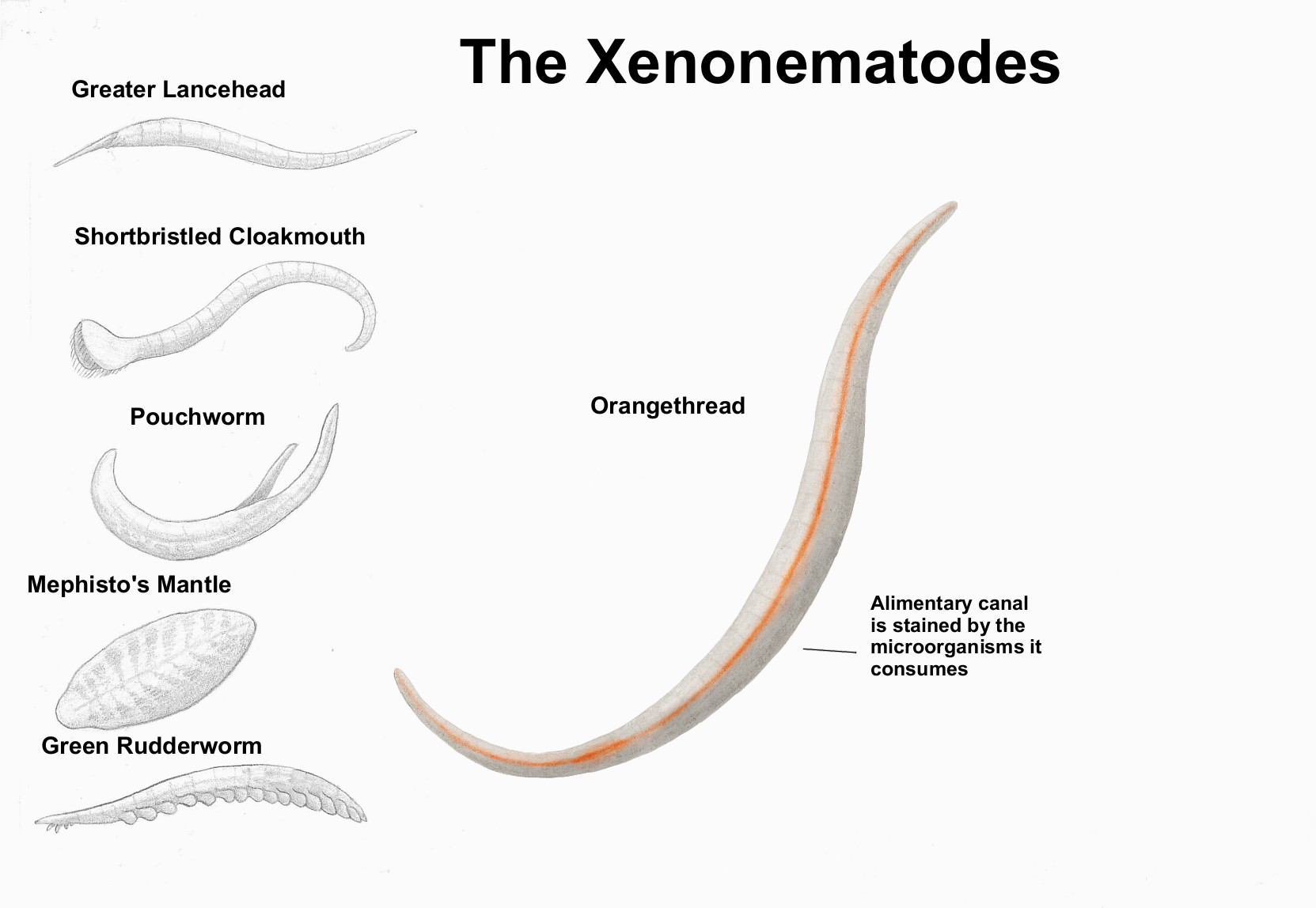HOME | DD
 Ramul — REP: The Xenonematodes
Ramul — REP: The Xenonematodes

#aliens #exobiology #xenobiology
Published: 2016-11-23 16:13:25 +0000 UTC; Views: 6214; Favourites: 102; Downloads: 44
Redirect to original
Description
Xenonematodes are one of the simplest, but also most successful clades among the Panimalia, consisting of over a million of species in every possible habitat. The most conservative forms superficially resemble Earth's nematodes, but have a different internal organisation. Xenonematodes have very variable shapes, with extreme forms such as the vectors or the siltribbons, which don't resemble their wormlike ancestors at all. The majority of them is microscopic, with only a few species being longer than 10 cm. The orangethread is a deep-sea species that lives close to hydrothermal vents and feeds on the microbial mats, the pigments of which gives their intestine its characteristic, bright-orange colour.Greater lancehead: Lanceheads are often predatory or parasitic. One of their teeth became elongated and grew into a forwards-facing spur that has a furrow on the underside, which, depending on species, is used to either inject venom or to suck bodily fluids. The greater lancehead is an aquatic form that sucks fluids from water-dwelling vermiphytes.
Shortbristled cloakmouth: The cloakmouths are mostly marine filter feeders, with only a few limnic forms or sediment feeders. Many species are sessile and able to excrete a tube made of a chitin-like substance. Some species form colonies, but are not modular organisms themselves.
Pouchworm: This is a freely floating deep-sea group where the larger female develops a pouch in which the smaller male lives. They either feed on small organisms or are ectoparasites.
Mephisto's mantle: While a flattened body shape has been developed by numerous groups independantly, this one sticks out by living in the deep biosphere, feeding to the microorganisms that are present there. The flattened shape aids it in fitting into rock crevices.
Green rudderworm: The rudderworms are among the larger xenonematode forms and are freewimming predators or filter feeders.
Related content
Comments: 9

👍: 0 ⏩: 1

👍: 0 ⏩: 0

Just to be sure--this is EARTH we're talking about, right?
👍: 0 ⏩: 1

Nope, it's Red Earth, a fictional exoplanet. Its name isn't exactly creative.
👍: 1 ⏩: 0

i like the subtle segmentation, it sets these apart from actual nematodes
👍: 0 ⏩: 1

Yes, the segmented muscles are the most visible difference.
👍: 0 ⏩: 1

yeah, i think it's almost tougher to make something unique-looking the simpler the creature is supposed to be
👍: 0 ⏩: 1

Yes, unless you give the simple organisms very crazy designs, like the mentioned vectors or siltribbons.
👍: 0 ⏩: 1

I must say I admire those very much! very unique concepts! I don't think I can compete with you, not just in picture quality, but in terms of creativity as well! (guess you have a hopeless fanboy on you XD sorry about that, i promise I won't stalk you or anything XD)
👍: 0 ⏩: 0


























